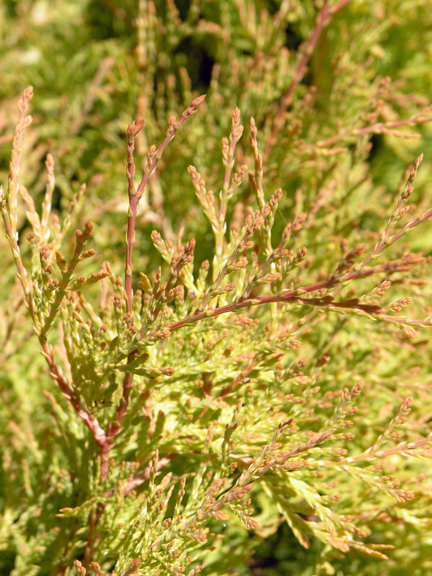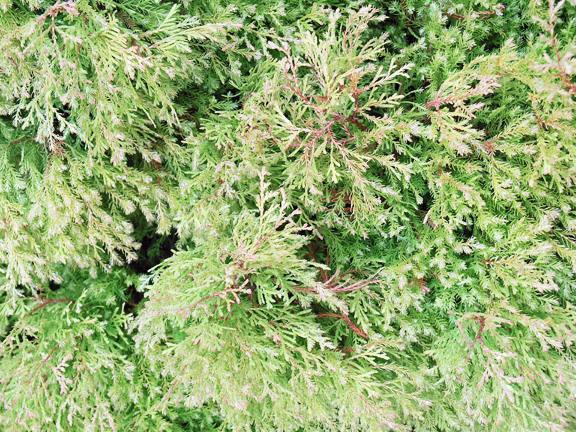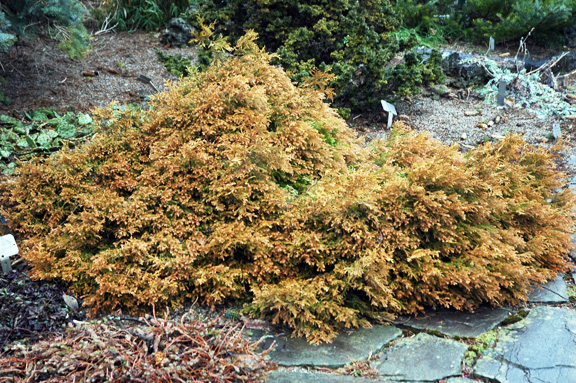
Woody > Thuja > Thuja occidentalis > Thuja occidentalis 'Rheingold'
Thuja occidentalis
'Rheingold'
Rheingold Cedar
Mike's
Opinion


"
Rheingold white cedar is a popular dwarf conifer for landscape purposes. Rheingold Cedar is ideal for use along walkways, and can also be used effectively as an attractive grouping due to its unique thin copper-orange foliage, which provides interest anytime of the year.
Michael Pascoe, NDP., ODH., CLT., MSc. (Plant Conservation)
"
| Family |
| Cupressaceae |
| Genus |
| Thuja |
| Species |
| occidentalis |
| Cultivar |
| 'Rheingold' |
| Category |
| Woody |
| Type |
| Shrub (evergreen) |
| Pronunciation |
| USDA Hardiness Zone |
| 6b - 7a |
| Canadian Hardiness Zone |
| 6 |
| RHS Hardiness Zone |
| H6 |
| Temperature (°C) |
| -21 - (-15) |
| Temperature (°F) |
| -5 - 5 |
| Height |
| 0.5 m -1 m |
| Spread |
| 1 m |
Photographs
Description and Growing Information
Flowering Period
| General Description |
| A low forming loose formed conical shrub, with fine light textured foliage. |
| Landscape |
| A lovely garden plant for adding year round interest. It is ideal for planting as a dwarf conifer in a heather border where it will reach a maximum height of one meter after approximately ten years growth. |
| Cultivation |
| Rheingold cedar is easily grown in sunny to light shade conditions, the soil should be well-drained and preferably alkaline. |
| Shape |
| Slow growing ovoid, conical shrub. |
| Growth |
| Medium |
| ID Characteristic |
| Rheingold cedar is easily identified by it’s loose globe like form, and it’s unique copper-orange like foliage. |
| Pests |
| It may be subject to bag worm, leaf miner, spider mites, and can also be eaten by deer. |
| Habitat |
| Horticultural origin. |
| Leaf Description |
| Fine scale foliage. Usually turns green in low light conditions, otherwise a copper-orange colour in full sun conditions. |
| Colour Description |
| Rheingold cedar has a unique copper– orange colour on adult foliage, and will turn a rich, golden plum-brown during the winter months. |
| Texture Description |
| A loose mounding globe like shrub. |
| Notable Specimens |
| The Gardens of Fanshawe College, London, Ontario, Canada. |
| Propagation |
| Cuttings are usually taken from current seasons growth. The rooting media usually consists of 3 perlite: 1 peat, and bottom heat to approximately 21 °C. |



